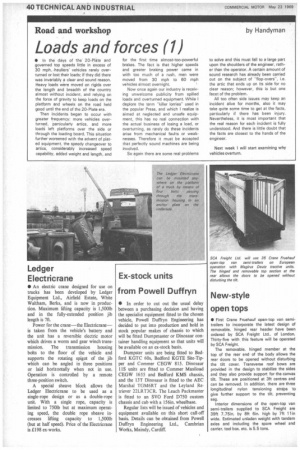Road and workshop
Page 42

If you've noticed an error in this article please click here to report it so we can fix it.
Loads and forces (1)
• In the days of the 20-Plate and governed top speeds little in excess of 30 mph, .hauliers' vehicles rarely overturned or lost their loads; if they did there was invariably a clear and sound reason. Heavy loads were moved on rigids over the length and breadth of the country almost without incident, and relying on the force of gravity to keep loads on the platform and wheels on the road held good until the end of the 20-Plate era,
Then incidents began to occur with greater frequency: more vehicles overturned, particularly artics, and more loads left platforms over the side or through the loading board. This situation further worsened with the advent of plated equipment, the speedy changeover to artics, considerably increased speed capability, added weight and length, and
for the first time almost-too-powerful brakes. The fact is that higher speeds and greater braking power came in with too much of a rush, men were moved from 30 mph to 60 mph vehicles almost overnight.
Now once again our industry is receiving unwelcome publicity from spilled loads and overturned equipment. While I deplore the term "killer lorriesused in the popular Press, and which I realize is aimed at neglected and unsafe equipment, this has no real connection with the actual business of losing a load, or overturning, as rarely do these incidents arise from mechanical faults or weaknesses. Therefore it must be accepted that perfectly sound machines are being involved.
So again there are some real problems
to solve and this must fall to a large part upon the shoulders of the engineer, rather than the operator. A certain amount of sound research has already been carried out on the subject of "flop-avers", i.e. the artic that ends up on its side for no clear reason; however, this is but one facet of the problem.
All too often side issues may keep an incident alive for months, also it may take quite some time to get at the facts, particularly if there has been injury, Nevertheless, it is most important that the real reason for each incident is fully understood. And there is little doubt that the facts are closest to the hands of the engineer, Next week I will start examining why vehicles overturn.
































































































































